Note: The following article contains major spoilers for Pokémon Red, Blue, and Yellow versions, Pokémon: Let's Go, Pikachu, and Pokémon: Let's Go, Eevee.
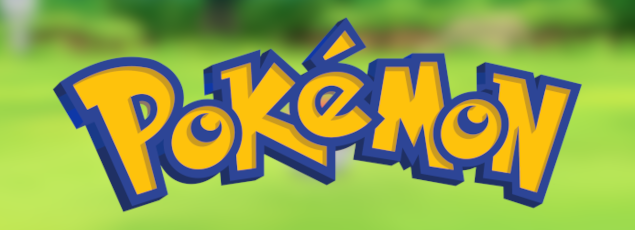
Nintendo has a knack for publishing games that are such classics that even twenty or forty years out from release, their design can echo on with minimal modifications. There are not a lot of series you could say that for. Pokémon: Let's Go, Pikachu and Pokémon: Let's Go, Eevee are 2018 remakes of 1996's Pokémon Yellow Version, itself a permutation on that year's Pokémon Red and Blue Versions.[1] This makes Let's Go, to some extent, remakes of three different games, and it is indicative of the staying power of early Nintendo design. But after twenty-two years, even an acclaimed retro game needs some updating, and Game Freak made some fascinating decisions in adapting Pokémon Yellow to the modern era. This article is not meant to be a full review of these titles but is me looking at the changes I find worth commenting on. It is also written so that you can follow along even if you've not played a Pokémon RPG in your life. A world of dreams and adventures with Pokémon awaits! Let's go!
Starter Balancing
The Original Design
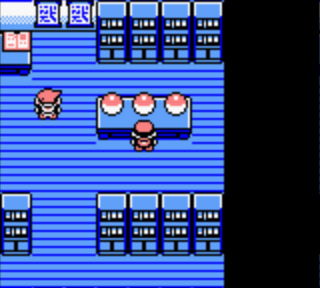
If you're not a hardcore Pokémon fan, this one is going to sound pretty inside baseball, but hear me out. The difficulty in the Gen I Pokémon games (Red, Blue, and Yellow) was topsy-turvy. Broadly speaking, games should get harder as they go on, and a childhood adventure like Pokémon should not resist new users too hard. Pokémon Red and Blue Versions let you pick one of three starter pokémon from Professor Oak's lab: Bulbasaur, Charmander, or Squirtle. Each one should be an equally valid pick for a few reasons:
- A new player won't have the experience to judge a pokémon's effectiveness, so expecting them to select the best pokémon from a list would be unfair.
- You want to lend new trainers an early rewarding choice, one that they can make even before they know the rules.
- You want players to feel confident in picking companions they think are cool or cute without taking a hit in attack or defence power. The visual design of the monsters is intended to be a large source of the appeal.
- You want to give players the best shot at filling out their Pokédex. As they can only pick one starter each, they'll have to obtain the two others through trade. But if some of the starter pokémon are weaker than others, the trade "market" will become saturated with the stronger pokémon. Fewer people will want to trade for those creatures, so this will lower the amount of trading overall, inhibiting trainers trying to finish their collection. Meanwhile, the rarer starters will be harder for trainers to obtain through no fault of their own.
- I'd argue it's a net positive to keep players having beneficial interactions with each other, which reducing the frequency of trades would limit.
In selecting your pokémon, type is a significant factor. Moves have typing, and so do pokémon. Use the correct attack on the correct pokémon, and you'll double the damage you do. Pick wrong, and you can halve the damage you cause or even inflict 0 damage. The same goes for your enemies. Pokémon generally learn moves of their own type. A dragon pokémon will learn dragon moves, a ground pokémon will learn ground moves, and so on. Overall, the most important factor when building a party is to consider whether they will have a type advantage against the gym leaders and Elite Four, the game's least forgiving foes.
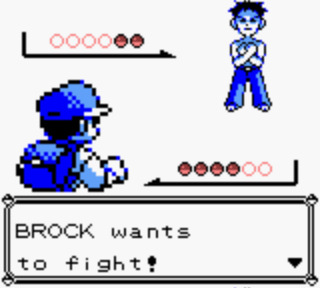
Let's look at the wild pokémon you can sick on the game's gym leaders and Elite Four. In other words, the non-starters you can let loose on the game's bosses. The first gym leader is Brock, whose Geodude and Onix are ground and rock-typed. That makes them strong against almost all the pokémon between the start of your journey and Brock's native Pewter City. Onix and Geodude are resistant to the normal Rattata, the normal/flying Pidgey, and the bugs of Viridian Forest. In Pokémon Yellow specifically, you can find the poison-type Nidoran on Route 2, which is also no match for his rock stars.
The accepted method for beating Brock in Pokémon Yellow is to catch a Mankey from Route 3 and unleash its super-effective fighting moves against his dense duo. However, this is an uncommon pokémon (15% spawn rate) in an area that's unintuitive to enter because it's past Pewter City, so an inexperienced player is unlikely to discover this strategy. It's also not possible in Red or Blue version. And even after beating Brock, the rock pokémon you encounter in Mt. Moon can slow the stride of many fledgling creatures. The second gym leader, Misty, is less of a headache as everyone will capture warriors that are at least neutral against her water types. Players of all three original RPGs can also catch grass pokémon North of Cerulean City to gain a type advantage against her and Pokémon Yellow players can win a Bulbasaur in the city itself.[2] Although, all of these take a little training up.
With wild pokémon on the back foot, you've got a lot riding on the efficacy of your starter pokémon, at least against Brock. These starters are doubly important because they're the students you'll have the most time to level up, and they come with some impressive stat sheets. Yet, those initial pokémon achieve wildly different success rates in the early game, depending on their type. All of them have normal moves, weak against rock, so it's their innate typing and non-normal moves that set them apart. The starters match up against the early opponents as follows:
| Species | Type | vs. Rock | vs. Water |
|---|---|---|---|
| Charmander | Fire | Weak | Weak |
| Pikachu | Electric | Can't Damage | Strong |
| Squirtle | Water | Strong | Neutral |
| Bulbasaur | Grass | Strong | Strong |
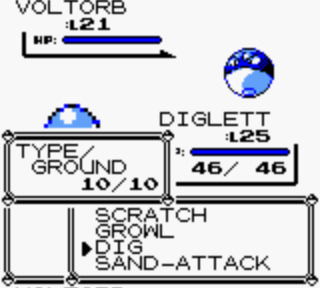
Bulbasaur even shorts the electric pokémon of the third gym leader, Lt. Surge. So, there's very preferential treatment of the starters through the first few gyms. Charmander is miserable, Pikachu is a bit better, Squirtle is better than Pikachu, and Bulbasaur takes the gold. Keep in mind, in Pokémon Yellow, you don't get to pick your starter; it's Pikachu or the highway. So, it's a little mean that it can't hold its own against the initial big bad. You could argue that choosing your first pokémon is a matter of deciding whether you want to have a combatant that excels now or later. While Bulbasaur might kick the ass of the first three gym leaders, it shrivels under the gaze of Koga and Giovanni's poison pokémon and Blaine's fire-breathers. Although Squirtle might steamroll Brock's living stones, Surge's electric shockers and Erica's grass pokémon will leave you scraping it off the floor.
But even in the long-term, some starters have advantages against more bosses than others. Compare Charmander to Squirtle. Charmander only has type superiority against one gym leader (Erica) and is not strong against any of the Elite Four, the game's final bosses. It also struggles to damage the two last gym leaders (Blaine and Giovanni) and comes up short against two of the Elite Four (Lorelei and Bruno). Squirtle, on the other hand, is weak against two gym leaders (Surge and Erica) but strong against three, including the last two (Blaine and Giovanni). It doesn't have a type disadvantage against any of the Elite Four and stands up very well to the first two (Lorelei and Bruno). To be fair, the manual tells you that Bulbasaur is the easiest starter, and in a roundabout way, that Charmander is the hardest.[3] Yet, you have to read through spoilers about Brock to get that information, and the player still can't entirely judge how helpful or unhelpful the starters are relative to each other, or how well non-starters will fill in for the functions of weaker starters. They also can't tell how much time and energy it takes to level pokémon to compensate for their shortcomings.
Your starters further have decreasing relevance as the game goes on because the more you play, the more time you have to collect and level up a wider range of types. We've already discussed how to pile on Misty with Oddish, Bulbasaur, or Bellsprout, but additionally, the rock and ground pokémon of Mt. Moon confound Lt. Surge's thunder pokémon, compensating for Squirtle's squishiness against them. Those early Pidgeys wrap back around to do 2x damage to Erica's plants, meaning that it matters less that Charmander could hold its own against them too. So, the greater emphasis on the performance of the starters through the first few routes and cities means they're not all equally valid. They really do tip the game one way or the other.
The Update
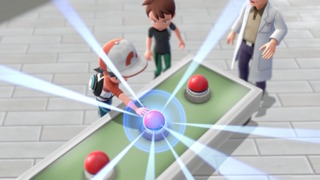
Pokémon: Let's Go, Eevee and Pokémon: Let's Go, Pikachu level the playing field with a couple of changes. Firstly, the games let you capture Bellsprout, the grass pokémon, in Viridian Forest, which has a type advantage against the first three gym leaders. If you're really lucky, you might find a Bulbasaur in the woods too. Secondly, the starters of Eevee and Pikachu can now learn the fighting move Double Kick, at level 10 and level 9, respectively. So, by the time you get to Brock, you probably have a relatively well-trained starter with a move that is strong to his typing.
If anything, the difficulty of Let's Go swings too far in the other direction for me. Not only are the early capturables stronger than in the original games, you get new affordances like being able to switch out your exhausted team members for any you've caught, even away from a PC, and not having to battle any wild pokémon. Random battles are replaced with passive catch encounters. But the opening chapters are overall improved. They have more forward momentum and are suitable for children and casual players.
The Emphasis on Hidden Machines
The Original Design
In the mainline Pokémon games, Hidden Machine moves are crucial. HMs allow you to teach an infinite number of pokémon high-damage attacks. The HM moves also have functions in the overworld, like letting you fast-travel (i.e. Fly) or pass through hard barriers (e.g. Cut, Surf, Strength). However, because the design ties these combat abilities to exploration abilities, you have less flexibility in what you can teach your pokémon. You don't just want the HM moves; you need them to get around the country of Kanto, which means you'll always have one pokémon in your party with Surf, one with Fly, one with Cut, etc. If you want to change that pet out of your party, then you're going to want to switch another with the same move in. The HMs are also a free, no-effort means to give an up-and-coming party member a powerful attack. So, the capabilities across all your pokémon become more homogenous, especially because a HM move will take a slot that another power would otherwise have filled.
The Update
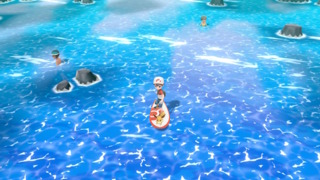
The main fix Let's Go implements for that issue is to unlink the overworld powers of HMs from the combat powers. On the map, you can now use Fly, Strength, Flash, etc., whether or not you've taught them to a pokémon (even if Let's Go gives them different names than Gen I did). So, you can teach each animal battle moves suitable for them without worrying about how you will move around the world. There are a couple of more subtle refocuses away from HM abilities as well. Firstly, the insides of caves are visible even without Flash. This actually makes Flash virtually redundant, but it means that you can pass through subterranean areas without having to worry about that Hidden Machine.
Secondly, Technical Machines can be tapped infinitely. In previous games, TMs were much like HMs, but granted a new combat ability with no overworld application and were consumed after use. In Let's Go, the limitless reserve of TM moves is another hack by which the player may become overpowered. However, it means that you're not just installing one water or flying move on pokémon over and over; you have a variety of actions of every type that you can teach on an endless cycle.
Pokémon Encounters
The Original Design
Including both elements from Pokémon Go and the mainline console games, Pokémon Let's Go is the diplomatic link between the two. Both traditional Pokémon and the mobile app have top-of-their-class approaches to monster encounters, but Let's Go manages to combine their designs without getting the benefits of either.
In the classic Pokémon battle system, the player is spoilt for the actions they get to pick from. They carry up to six pokémon that know up to four moves each (that's twenty-four abilities), and those characters also have different type match-ups with enemies. Then, you have a buttload of items that can turn a battle in your favour. Each meeting with a wild pokémon is pretty meaty, but arguably, the core Pokémon games make encounters, to which they dedicate tens of hours, a potential annoyance rather than something you're always excited for.
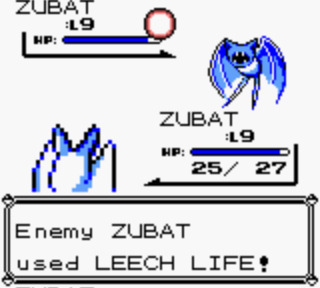
You get a lot of similar fights in quick succession that don't incur a huge cost or pay big jackpots. Your fighters' HP is chipped away little by little, and XP comes in on a drip feed, as is the JRPG. When your party is low on health, the sudden and random nature of battles can make them annoying. You can sometimes run away to opt out of the scuffle, but that's an anti-climax. I don't want to go too hard on this point because there's a lot to be said for games that comfort through predictability and provide a slow, steady sense of progress rather than trying to get you hopping out of your seat at every turn. Still, I get why a designer or player might want to see their random encounters spiced up.
Pokémon Go is an augmented reality game you're meant to integrate with riding in vehicles or walking, during which you're potentially surrounded by distractions. So, fiddly UI manipulation and tasks that require intense focus are out. Encounters are simplified and shortened. They are a diet alternative to the higher-calorie matches of the full game. Despite that, their bite-size nature means you can blow through a bunch in a row with satisfying haste. The touch controls also connect you to the Poké Ball, modelling it as a light and aerodynamic projectile. The trajectory of the ball follows the path of your digit, making it an extension of your hand. Using different systems for battles and capturing, Go is able to make each a distinctive activity and casts you as less of an aggressor towards the wildlife, which is a positive when Pokémon is intended to have a warm air and make you a companion to its creatures.
The Update
Taking a leaf from Go's book, the encounters in Let's Go are slimline. But like the classic Pokémon face-offs, they also lack synchronicity between what your body is doing and what happens on the screen. To attempt a catch, you're either making a throwing motion with your Joycon or Poké Ball Plus, or you're aiming the whole-ass Switch at a pokémon like a camera and pressing A. In the former case, you're employing motion controls, but the arc of the Poké Ball does not extend from your hand, so you have a lack of kinetic immersion. In the latter case, you can't get comfortable as you normally would with a handheld console because you need to change position often to track pokémon. The view also jitters about as you act as the tripod for this weighty screen. You often have to pick the whole console up because, more often than in Pokémon Go, species drift left and right across the environment like you're at a cheap carnival arcade. You can argue that a lot of the design choices in this game that might be unpalatable to us make it more suitable for children. Yet, in this case, it seems harder for them to keep the device aloft and steady in front of them.
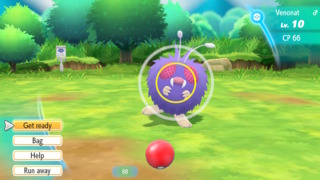
It's also mystifying that even a deft shot with the best Poké Balls leaves pokémon with a high chance of breaking out. The text on the screen might say "Excellent", but the results don't. I can't see how these unavoidable and frequent failures line up with Let's Go's goal of inviting a wider audience into the series. You have neither the option to wear down a pokémon's HP and put them to sleep that the original RPGs gave you nor the reasonable base catch rates of Pokémon Go. Because each catch attempt is more likely to fail, you'd want to be able to throw your electronic cages and access items at the tap of a button. But Let's Go lets you down there too.
In Go, a button on one side of the screen pulls up a short menu of balls, and one on the other side does the same for berries. Berries are items that can increase reward yield from pokémon or make them easier to catch. If you want to throw the ball, you just use the touch controls. In Let's Go, it takes longer to complete the motion that dispatches the ball, and every time you want to perform the throwing motion, you have to select a menu option to activate throw mode first. Entering your inventory to change balls or equip a berry requires a lengthy chain of inputs. You spend so much time communicating basic actions to the game and little time seeing the results of those actions, so encounters never get into a rhythm. Whenever a pokémon breaks out, it's a bummer because it means more time spent with the game's underbaked UI.
Inventive Encounter Rewards
The Original Design
The series' releases on Android and iOS came up with some inventive reasons for you to be on the lookout for specific pokémon. In the console games, capturing a pokémon rewards experience which is useful in general but gives you little reason to pursue one species or return to earlier areas. The optimal strategy is usually to keep encountering pokémon in whatever the appropriate area for your current level is. All encounters give experience, so you should seek out those from which you can get the most EXP for your current tier. However, in Pokémon Go, each animal drops candies specific to its species. Each species can only be levelled up, taught a new move, or evolved (where applicable) by feeding them enough of their species-specific sweets. In other words, you can't stalk just any creatures to develop your pokémon; you need to collect pokémon of a specific species. You must be precise in your catching and can benefit from widening the window of pokémon you're willing to scoop up.
The Update
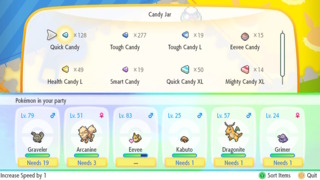
Pokémon Let's Go attempts to carry forward this idea that rewards are more meaningful if you can't get them just anywhere. However, it can't incorporate Go's candy system while running base Pokémon's XP system. Both candy and XP are resources to level up, evolve pokémon, and teach them new moves, so one makes the other redundant. But Let's Go has another bright idea: most of the candies you earn aren't general-purpose boosts for your team. Instead, they augment a specific stat for any pokémon, like Speed or Attack, with monsters coming packed with candy for the stat they're strongest in. Not as many wild creatures are worth finding as in Pokémon Go, but on the plus side, you now have more control over how a pokémon grows without getting into the esoteric and hidden IV and EV determinants.
The New Ball Click Logic
The Original Design
There's this loose rule in game development that when there's a meaningful change in the game state that you want to be transparent to the player, that change should be accompanied by visual and auditory cues. The more bearing the change has on our potential success or failure (it can even be a success or failure), the brighter, louder, and bigger the cues should be. In modern fighting games, you'll often find that doing chip damage to an opponent results in slight popping animations and a quiet sound effect, but KOing your opponent could make them fly backwards with a huge "whoosh". A "KO" text plate may appear across the screen with a voice yelling out "KO". Or in the rhythm game BeatStar, the closer you keep your inputs in line with the song, the more points you score. Tapping a button close to the arrival of a note will cause the word "Perfect" to pop up in green but not much else. If, however, you hit the note dead-on for a "Perfect+", the announcement of your success will be accompanied by a bright green flash. The profile of the feedback matches the seriousness of the gameplay event.
For Game Boy releases from 1996, Pokémon Red and Blue were ahead of their time in using animation and sound effects to speak to events in play. Lots of games have these scenarios where we place a high value on the outcome of a semi-random process. You can see one in Pokémon, where we're waiting to find out whether or not a creature breaks out of a ball. The smart thing Game Freak worked out was that instead of blurting out whether you'd caught the Pokémon or not and then moving along, they could draw out this moment of tension. They could make it like watching the reels get locked into a slot machine or a roulette wheel slowly crawl to a stop. Their version of this casino drama was to have three beats on which either the ball containing a pokémon shakes (success) or breaks (fail). If the ball wobbles three times, you'll then get some combination of visuals and sounds that indicate you've caught the creature. Pokémon games later got into the habit of lengthening the catch sequence, and on a success, pausing after the third wobble and then having sparks fly out of the ball and playing a "click" sound.
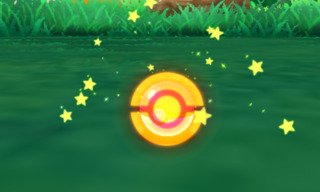
But wait! This violates the development guideline I mentioned earlier. Passing the third check matters more to players than passing the first two because the first two checks only earn you another check, whereas passing the final check earns you a 100% A-grade certified pokémon. In fact, the first and second check only matter because of the value of passing the third. So, you'd think that succeeding at the first two checks would earn you a subdued animation, and succeeding at the third would result in one that's a little more explosive. Yet, the series has traditionally used this limp wobble animation for all of them.
There is the more celebratory "click" animation at the end of the capture attempt, but by the point we see that, we already know we've collected the pokémon from the third wobble: the tension has been released. We could think of that third wobble as a spoiler.
The Update
If we're following the rules, the "snap" should come at the moment the pokémon is caught. That's what Pokémon Let's Go does, using the gentler shaking animation on three initial checks but building up to a post-wobble moment of failure where the Pokémon punches out of the ball or success in which yellow shapes fly from it, and we hear a satisfying click. Tension is retained to the end of the catch sequence, and the animations and sound are consonant with the play.
___
One reason Let's Go proves the timelessness of the first-gen Pokémon RPGs is that some of its "updates" to them make it worse by comparison. Yet, when looking at a game as impressed on our minds as Pokémon Yellow, it can be hard to imagine it in any other state than the one we've known it in for upwards of two decades. Game Freak shows that it's possible to love a game while also being critical of its shortcomings and seeing where it might benefit from changes. For the gameplay design, at least, this is a net positive. Thanks for reading.
Notes
- All dates are North American.
- Thanks to Broshmosh for pointing out the Bulbasaur in Cerulean City.
- Thanks to Ginormous76 for pointing this out.
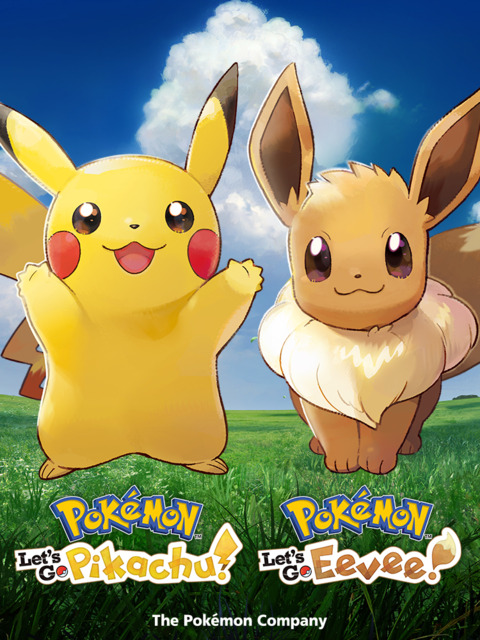
Log in to comment